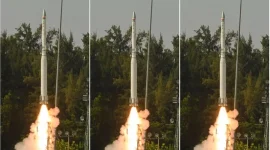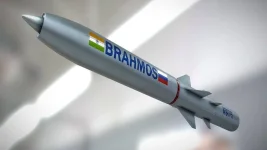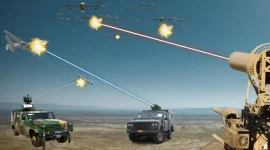- Views: 2K
- Replies: 6
In a significant measure to bolster its national security infrastructure, India is fast-tracking the acquisition of 87 Medium-Altitude Long-Endurance (MALE) drones.
This initiative aims to substantially upgrade the real-time surveillance capabilities of the armed forces along critical land borders and vast maritime zones.
The procurement of these advanced unmanned aerial systems is designed to address the country's evolving security landscape by providing persistent intelligence, surveillance, and reconnaissance (ISR).
The drones will be engineered to meet stringent operational demands, including the ability to fly for over 30 hours continuously and operate at altitudes exceeding 35,000 feet.
This will enable comprehensive monitoring over diverse and challenging terrains, from high-altitude mountainous regions to expansive sea territories.
Beyond surveillance, these platforms will also be equipped with combat capabilities to allow for swift responses to emerging threats.
Central to this approximately ₹20,000 crore project is the strategic goal of promoting indigenous manufacturing. The government has mandated a minimum of 60% indigenous content for the drones, a move that aligns with the "Aatmanirbhar Bharat" policy.
This condition is intended to cultivate a robust domestic ecosystem for advanced defence technologies, enhance the capabilities of Indian industry in the high-tech unmanned systems sector, and reduce the nation's dependency on foreign military hardware.
This project marks a pivotal moment, as it will be the first time that major orders for MALE-class drones are set to be fulfilled by domestic companies, a domain previously dominated by international suppliers.
Several prominent Indian defence and aerospace firms are positioned as likely contenders for this high-value programme. The list includes Adani Defence, Tata Advanced Systems, Hindustan Aeronautics Limited, Larsen & Toubro, Solar Defence and Aerospace Limited, and Raphe mPhibr, all of which are expected to contribute their significant technological expertise.
A senior defence official commented on the strategic importance of the acquisition, stating, "The acquisition of these MALE drones is a critical step in enhancing our operational readiness and situational awareness."
He further emphasised, "The emphasis on indigenous content ensures that we build a robust ecosystem for advanced defence technologies within the country."
The project is being managed on a fast-track basis to ensure timely deployment in response to dynamic security challenges.
The advanced ISR capabilities of these drones are expected to provide the armed forces with high-quality, real-time intelligence, thereby facilitating quicker and more effective decision-making in complex operational scenarios.
This move represents a dual-pronged strategy: strengthening the nation's defence while simultaneously empowering its domestic industrial base.



